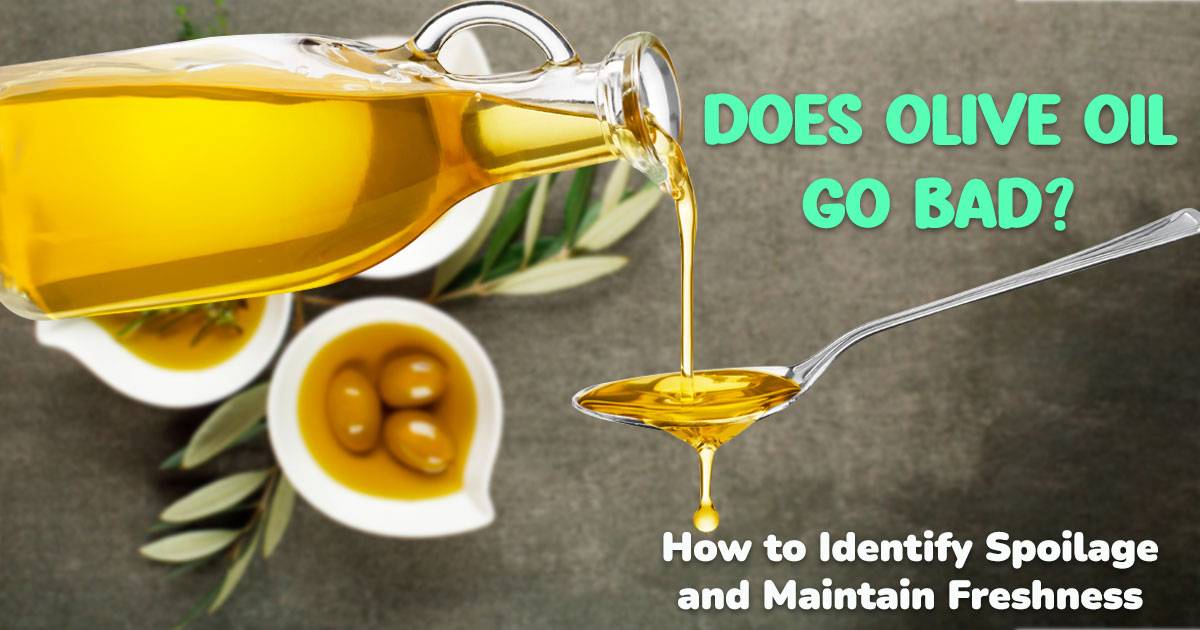Does Olive Oil Go Bad? How to Identify Spoilage and Maintain Freshness

Olive oil, a golden elixir extracted from the humble olive, has long been revered in the world of cuisine and cooking. Its versatility is unparalleled, from sautéing vegetables, meats, or seafood, creating the perfect base for soups and stews, to finishing off a dish with a flavorful drizzle. Even the simplest foods, like bread rolls and cheese, are elevated with a touch of this oil. But olive oil isn’t just about flavor; it’s a healthier choice too.
Packed with antioxidants and healthy fats, olive oil is an excellent substitute for other cooking oils. It offers numerous health benefits, including lowering cholesterol levels and reducing the risk of heart disease. This makes it a preferred choice for health-conscious cooks and foodies alike.
The global demand for olive oil echoes its importance. According to Grand View Research, the global olive oil market was valued at USD 22.30 billion in 2022 and is expected to grow at a compound annual growth rate (CAGR) of 5.2% from 2023 to 2030. As its popularity continues to rise, more people recognize its culinary and health benefits. However, to truly enjoy what olive oil has to offer, it’s crucial to use the best quality and ensure it hasn’t spoiled.
Detecting Spoiled Olive Oil: What You Need to Know
While olive oil is a robust cooking ingredient, it’s not immune to spoilage. All food products, including olive oil, have a shelf life. When not stored properly or used beyond its expiration date, it can go rancid, losing its delightful flavor and health benefits. The result is an oil that is not only unpleasant to taste but also unfit for consumption.
Identifying spoiled olive oil is key to ensuring the quality of your dishes and your health. Here are several signs that your olive oil may have gone bad:
- Unpleasant Smell: Fresh olive oil has a pleasant aroma reminiscent of fruits or herbs. If it emits a sour or musty odor, it may have spoiled.
- Off Taste: Olive oil should have a slightly peppery, fruity or bitter taste, depending on the variety. If it tastes stale or rancid, it’s best to discard it.
- Change in Color: While olive oil can vary in color, from a golden yellow to a deep green, any drastic change in color could indicate spoilage.
- Thick, Sticky Texture: Fresh olive oil should be smooth and runny. If it feels thick or sticky, this could be a sign of spoilage.
The Effects of Using Spoiled Olive Oil
While using spoiled olive oil isn’t as dangerous as consuming other spoiled products like meat or dairy, it does come with its own set of consequences. Here’s what you might experience if you use rancid olive oil:
Compromised Taste
One of the most immediate effects of using spoiled olive oil is the negative impact on the taste of your food. Rancid oil can impart an unpleasant flavor, ruining the overall taste of the dish.
Loss of Nutritional Benefits
Fresh olive oil is rich in antioxidants and monounsaturated fats, which provide numerous health benefits. But when the oil goes bad, these beneficial compounds break down, meaning you won’t reap the health benefits you would from fresh oil.
Possible Digestive Discomfort
Consuming spoiled olive oil might lead to minor digestive discomfort. While it’s not common, some people may experience symptoms like nausea or diarrhea.
Increased Exposure to Free Radicals
Rancid oils, including olive oil, can develop harmful compounds called free radicals. These can cause oxidative stress in the body, which has been linked to chronic diseases like heart disease and cancer.
It’s important to note that occasional consumption of spoiled oil isn’t likely to cause serious harm, but habitual consumption could have potential long-term effects.
Keeping Your Olive Oil Fresh: Tips for Extended Shelf Life
Just as important as recognizing the signs of spoiled olive oil is knowing how to properly store it to maintain its quality and extend its shelf life. Here are some tips to keep your olive oil fresh and ready for your culinary creations:
Store in a Cool, Dark Place
Light and heat can degrade olive oil over time. Store your olive oil in a cool, dark location away from heat sources like your stove or oven to prevent this.
Use the Right Container
Store your olive oil in a stainless steel or glass bottle with a dark color. These materials protect the oil from light exposure, which can accelerate spoilage.
Seal Tightly
Always ensure that the bottle cap or lid is tightly sealed after use. Exposure to air can oxidize the oil, leading to spoilage.
Avoid Cross-Contamination
Be sure to use clean utensils when dipping into your olive oil bottle to prevent cross-contamination, which could introduce bacteria and hasten spoilage.
Rotate Stock
Use older bottles before newer ones. Olive oil doesn’t improve with age like wine; it’s best consumed within a year or two of its harvest date.
The Value of Fresh, Quality Olive Oil
Olive oil serves as more than just a cooking oil. It’s a versatile culinary companion that enhances the flavor of your dishes and provides numerous health benefits. But like any other food product, it requires proper care to maintain its quality.
Using fresh, high-quality olive oil can make a significant difference in your cooking, elevating your dishes from ordinary to extraordinary. More importantly, it’s a healthy choice. Rich in antioxidants and monounsaturated fats, good-quality olive oil contributes positively to your overall well-being.
However, these benefits can only be enjoyed if the olive oil is stored correctly and used mindfully. By following the storage tips outlined in this article, you can extend the shelf life of your olive oil and keep it fresh for longer. This ensures that whether you’re dressing a salad, sautéing vegetables, or creating a marinade, your olive oil will always be at its best, ready to enhance your dishes with its delightful flavor and health-boosting properties.
